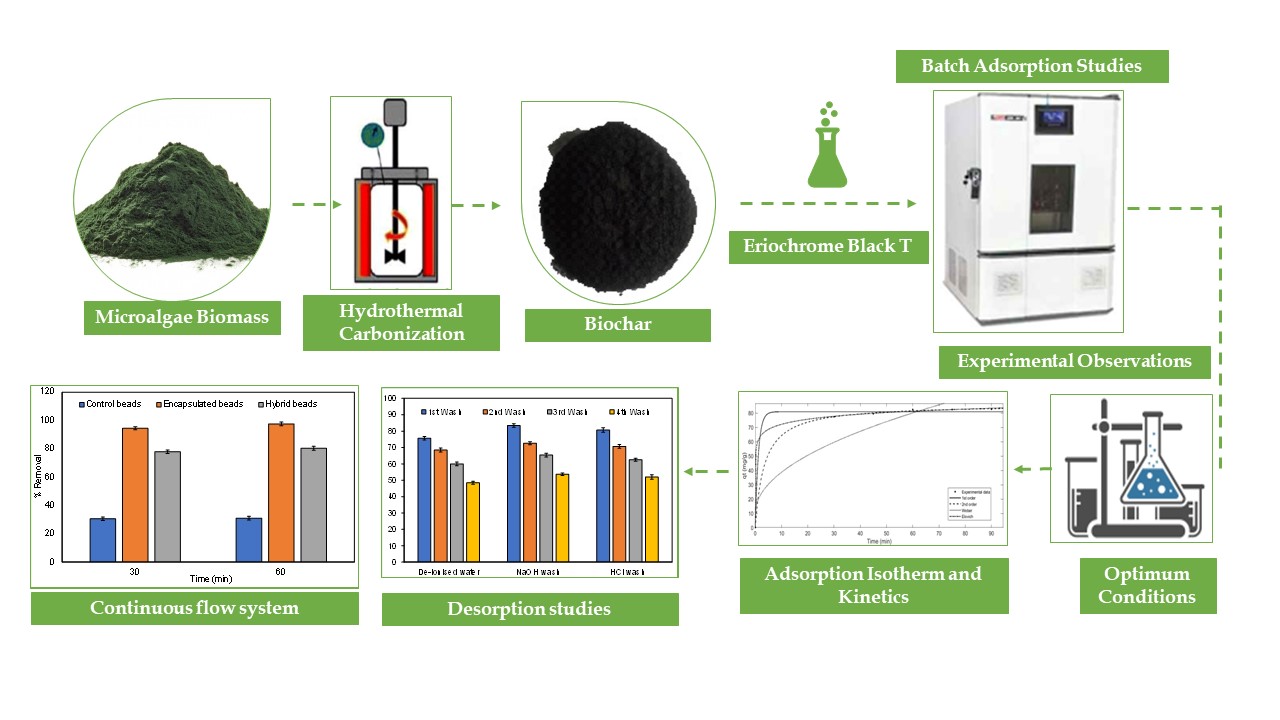
In this study, Chlorella vulgaris microalgae was cultivated from wastewater and converted into biochar through hydrothermal carbonization process. Acclimatization of microalgae resulted in a greater biomass yield of 4.1 g/L in 15 days in a Fog's medium to wastewater ratio of 20:80. Microalgae biomass was converted into biochar through hydrothermal carbonization process at temperature of 350 °C. The batch adsorption studies for the removal of Eriochrome Black T dye (EBT) from aqueous solution was performed by modifying various parameters. At an initial dye concentration of 100 ppm, a contact time of 60 min, a temperature of 30 °C, a biochar dosage of 0.3 g, and a pH of 7, the best dye removal efficiency was 82.31%. The investigation of the adsorption isotherm and kinetics revealed that the adsorption process followed pseudo-second order kinetics with the Langmuir isotherm model. In addition, the column adsorption investigations were carried out by varying the beads and bed height. Encapsulated beads outperformed control and hybrid beads in terms of removal efficiency. Column parameters such as initial metal ion concentration, bed height, and flow rate were optimised using the BDST model.
Total file downloads: 15